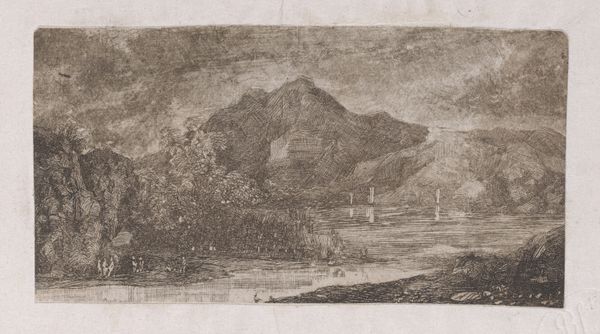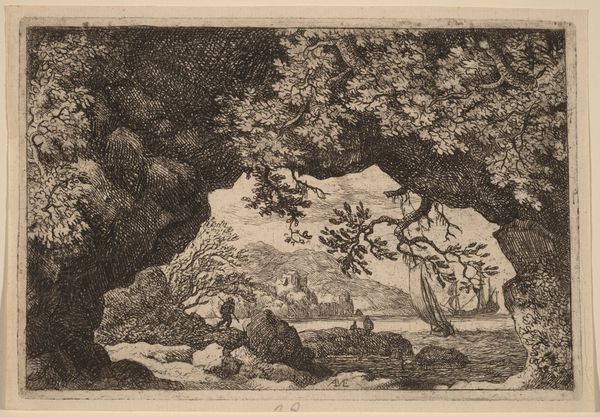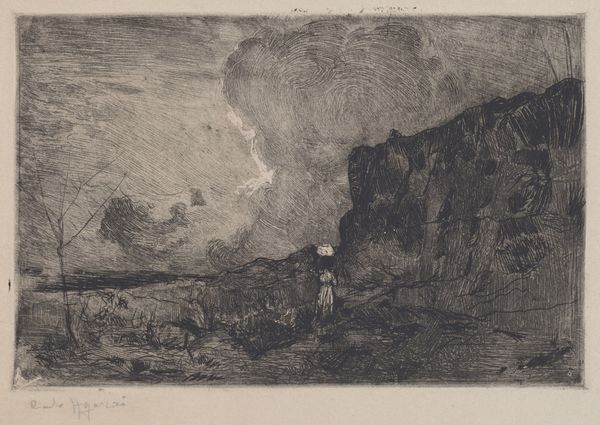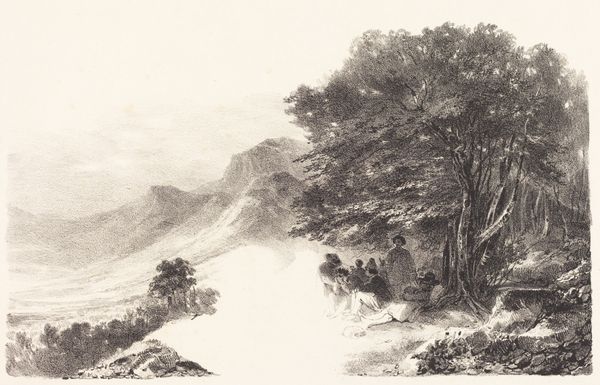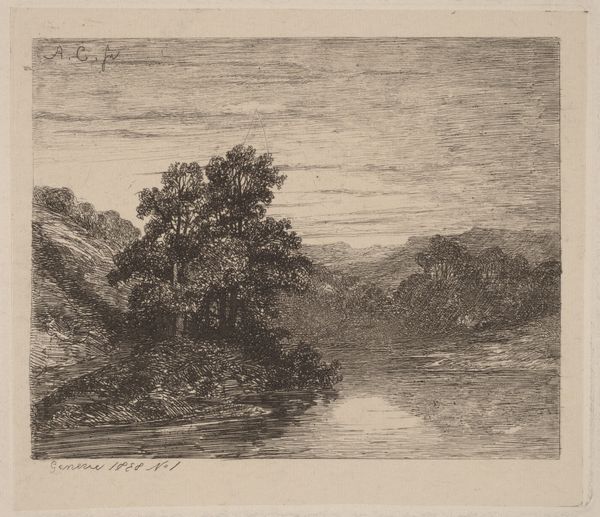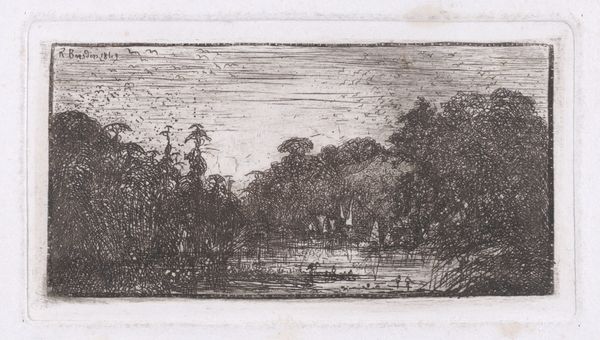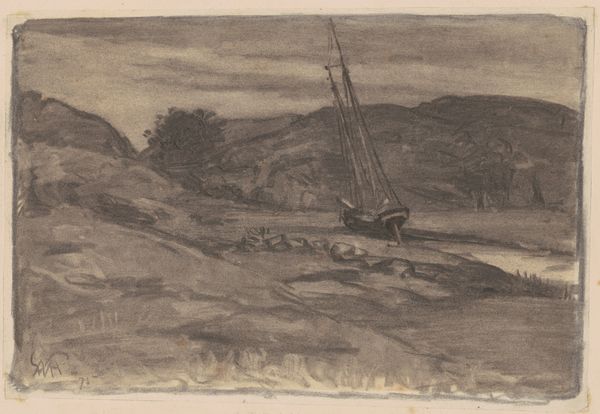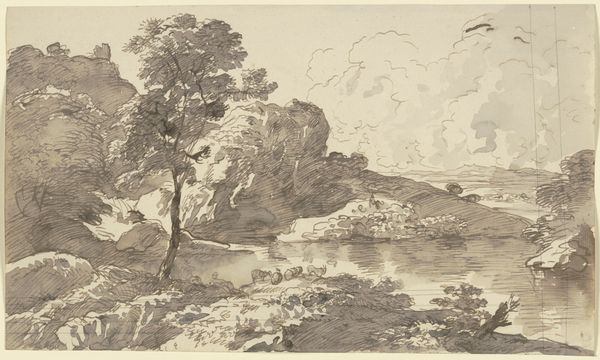
print, etching, plein-air
# print
#
impressionism
#
etching
#
plein-air
#
landscape
#
realism
Dimensions: plate: 15.7 × 23.7 cm (6 3/16 × 9 5/16 in.) sheet: 21.2 × 35.7 cm (8 3/8 × 14 1/16 in.)
Copyright: National Gallery of Art: CC0 1.0
Editor: So, this is André-Marie-Paul Borel's "View of a Shore," created around 1881. It's an etching, giving it this really intricate, almost shadowy feel. I find it quite somber, actually. What do you see in this piece, especially considering its visual language? Curator: The landscape, the shore… it all feels imbued with a sense of transition, doesn’t it? Look at the single sailboat; a traditional symbol for a soul’s journey, its mast reaching to the heavens. The lone tree seems to echo that reaching, as though tethered, an earthly monument bridging water and sky. Notice how the darker foreground, almost oppressive, throws into sharper relief the hazy distance. Does it stir within you a yearning? Editor: Yes, a longing almost. The darker foreground is definitely weighing on me, so the faint light reflecting off the water is appealing, hopeful. The tree, though…it feels sturdy but isolated. What do you make of that isolation? Curator: The isolated tree stands for resilience, wouldn’t you say? Even in monochrome, the textures practically vibrate, etching the permanence of memory itself. The landscape is no longer simply a place, it has become a stage for contemplating what it means to endure, persist, even to simply "be" when time carries all things forward and away. The tree’s loneliness embodies this, in my mind. What aspects are most memorable for you? Editor: It’s the layers, definitely – the darkness yielding to light, the solid shore facing the endless water… it feels like a visual poem. Curator: A perfect summation. It is by looking closely into a still moment, and through shared symbolism that we discover deeper significance.
Comments
No comments
Be the first to comment and join the conversation on the ultimate creative platform.

